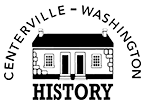Peter Sunderland
An Uncommon Family
By Pat Aldrich, Society Member
The Curator, January/February 2007
With the romantic involvement of Colleen Sullivan, Dayton’s former news anchor, and Charles Spencer, brother of Princess Diana, in the news, the Miami Valley is once again connected to the Spencer Family of England. Our first connection goes back to the early settlement of our community and to Peter Sunderland who ran a large and prosperous farm on Alex-Bell Road. Centerville Historian Howard Houser researched and wrote a very interesting history of the Spencer family and why and how the Sunderlands came to this country in his book, The Royal Rebels, The Sunderlands in America, published by the Historical Society in 1992.
The Spencer in the news today is a descendant of Charles, 3rd Earl of Sunderland and his second wife, Lady Anne Churchill. Peter Sunderland is a descendant of the same Charles, 3rd Earl of Sunderland and his third wife, Judith Tichborne, a commoner. Charles and Judith’s oldest son, Samuel, was Peter Sunderland’s grandfather.
Being the son of a commoner, Samuel was not entitled to any inheritance and his name was not recorded at Althorp, the ancestral home of the Spencers. Samuel, possibly dissatisfied with his family position, decided in the mid-1700s to emigrate to the Colonies with his young family. When he arrived, he chose to use the name Sunderland rather than Spencer, creating a symbolic tie to a heritage that was denied to him.
Peter Sunderland’s father, William, brought his family to Ohio with the opening of the Northwest Territory in 1795 when Peter was 18 years old. William arranged to purchase the southern half of Section 20 in Washington Township. However, because of the Symmes Land Purchase fiasco, where settlers had to buy their land twice, he was forced to release the southeast quarter to his older son Richard. Peter, his second son, assumed responsibility for another settler’s land on the southeast quarter of Section 26 which sat next to his father’s. Section 26 and 20 sit east of Far Hills Ave. and north of Alex-Bell Rd. where Cross Pointe Shopping Center and RETS Tech Center are now located.
Peter lived, worked and contributed to the growth and development of the community. He married Nancy Robbins, daughter of Centerville’s co-founder Benjamin Robbins, on October 15, 1799 in the first wedding ceremony performed in Washington Township. They had eleven children.
In 1802, Peter and Richard witnessed the first will to be filed in Montgomery County and affixed their marks. In 1803, Peter was the subject of the county’s first court case, held on the upper floor of Newcom’s Tavern. Peter was charged with assault and battery on Benjamin Scott. He pleaded guilty and was fined $6 and costs. One year later, they were back in court for the same offense, but this time Benjamin Scott was found guilty and fined the same.
The stone house that was Peter’s home was built about 1820. A secret hiding place above one bedroom was used as a shelter for slaves heading to Canada on the Underground Railway. One such slave was Black John. Word of the slave's presence reached Kentucky and a group of men came to reclaim him. Peter threatened one of them with a corn cutter while Black John headed into the nearby woods, never to be heard of again.
In 1799, Peter had built a large stone springhouse on his property as part of a stockade to protect the families of the area from a rumored Indian uprising. When the scare passed, the fort was abandoned, but the springhouse remained and was discovered among the bushes and weeds as the land was being cleared for the shopping center in the early 1980s. Through Janet Thobaben and other's preservation efforts, Peter’s springhouse was carefully dismantled and then reassembled in Stubb’s Park.
Howard Houser’s book, "The Royal Rebels, The Sunderlands in America," relates many other fascinating stories of these “commoners” as they made their way to the Miami Valley to establish new lives. Peter’s grandfather’s decision to bring his family to a new land, where hard work and ability could make a good life, was a wise one. As Howard says in his book, the Sunderlands were “an old and prestigious family whose members served their adopted country with courage, distinction and great honor.”
